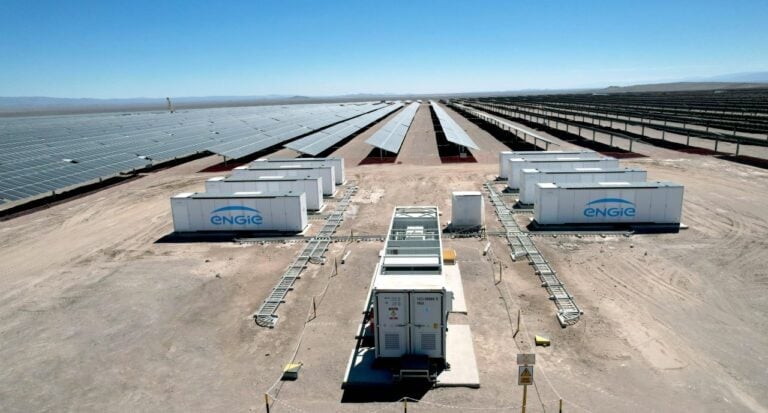
The Chilean subsidiary of French utility Engie has started construction on a 151MW solar-plus-storage project in the Metropolitan Region of Chile.
This is the first energy project for the utility in the central region, where the capital Santiago is located, and will include a 199MW battery energy storage system (BESS) with a 5-hour duration.
Try Premium for just $1
- Full premium access for the first month at only $1
- Converts to an annual rate after 30 days unless cancelled
- Cancel anytime during the trial period
Premium Benefits
- Expert industry analysis and interviews
- Digital access to PV Tech Power journal
- Exclusive event discounts
Or get the full Premium subscription right away
Or continue reading this article for free
With an investment of US$130 million, the project – dubbed PV & BESS Libélula – is in the early stages of construction and is forecast to begin commercial operation in the third quarter of 2026. In total, the project is expected to install 245,560 solar panels and 208 ion-lithium containers.
Engie Chile aims to reach 3.5GW of operational energy by 2027 in the country with over 60% coming from renewables and BESS.
Low-carbon solar trackers
Engie said the project will include low-carbon solar trackers from Nextracker.
According to the company, this will be a first in Latin America with the US tracker manufacturer providing 2,311 of its low-carbon NX Horizon trackers. The trackers will incorporate steel produced in the US using electric arc furnace technology. Nextracker claims these low-carbon trackers reduce carbon emissions by 30% compared with traditional manufacturing methods.
Nextracker achieved this milestone last year, when it received confirmation from a third-party verified analysis. At the time, its NX Horizon tracker series had received the Carbon Trust Product Carbon Footprint label, which demonstrated that it met “the global standard” for carbon emission data collecting and reporting for the production of its NX Horizon products.
Zelestra orders 1GWh of BESS from Sungrow
In related Chilean news, Spanish independent power producer Zelestra has ordered 1GWh of BESS technology plus PCS equipment from Sungrow for a solar-plus-storage project in the northern region of Tarapacá.
As covered by our sister site Energy-storage.news, the solar-plus-storage Aurora project will include 220MW of solar PV for which Sungrow will provide its 1+X Modular Inverter with an 8.8MW block design.
The project will provide power to utility Abastible outside of solar generation hours via a power purchase agreement (PPA) signed with Zelestra in March this year.
Construction of the Aurora project is currently underway, and Sungrow is expected to deliver the BESS units in Q4 2025.
Zelestra, owned by private equity firm EQT, has 1.7GW of projects contracted, in construction or in operation in Latin America and a total portfolio of 7GW.
Building solar PV with BESS in Chile has become an “absolute necessity” with more and more solar PV being curtailed. Last year, the country saw its solar PV and wind power curtailment more than double year-on-year to nearly 6TWh, according to data from trade body the Chilean renewable energy and energy storage association (ACERA).
Despite the ongoing curtailment issues for solar PV, Chile remains one of the leading markets in South America and will be one of the driving forces in the region in the coming years. Earlier this year, Wood Mackenzie forecast that South America will add 160GW of new solar PV capacity by 2034 and said Chile and Brazil would account for 78% of this.
Since the beginning of the year, Chilean solar-plus-storage activity has been on the rise. Recently, Greek renewables developer Metlen Energy & Metals selling a 588MW/1.6GWh Chilean solar-plus-storage portfolio or developer Atlas Renewable Energy securing US$510 million financing for a 215MW/1.6GWh project. Our sister site Energy-storage.news has also been covering the latest developments in the Chilean BESS market.
The BESS market in Chile and its necessity for the country’s solar PV market was the subject of a deep-dive article in a recent edition of our quarterly journal PV Tech Power, which is available to our Premium subscribers.






